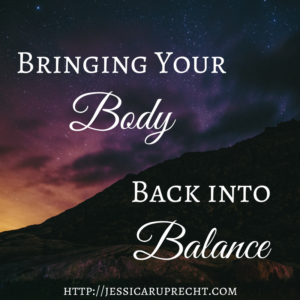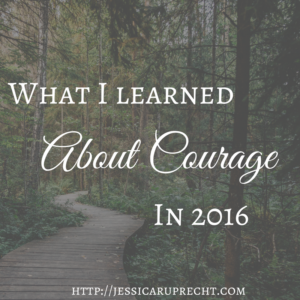Here’s the thing that no one tells you: if you have a big, crazy dream you want to make come true you’re going to need to focus on your fundamentals. Getting enough sleep, eating well, exercising in a way that feels good in your body — these things aren’t just glamorous distractions; they’re the nitty, gritty details that make success possible.
This is a lesson that has been really hard for me to learn.
In part, this is because our hardest lessons are always more about unlearning than they are about learning.
The places where I struggle the most are the places where what I need to do to move forward runs counter to that which worked for me at some point in the past.
My habit of sacrificing the needs of my body in order to achieve my goals has worked incredibly well for me in the past. After all, I powered my way through a B.S. and an M.S. from MIT under the steam of 100,000 unmet needs.
I denied my body the sleep that it craved, week after week and year after year — all in the name of getting my work done so that I could be a “success”.
I denied my body the healthy movement that it craved, because the honest truth was that I was too exhausted.
And so on. And so forth.
This approach worked okay for me for a few years. After all, I was young — I had resources to burn.
But eventually my resources ran out and I fell apart.
By the time I graduated from MIT I was utterly exhausted, suffering from chronic back pain, on my way to developing multiple food sensitivities, and so profoundly anxious from five years of constant, severe academic stress that I was pretty much living my whole life trapped between fight-or-flight (see this comic by the delightful Gemma Correll).
If you think that all sounds a bit overly dramatic, I promise you it’s not. All of those things really happened to me. But my point isn’t to solicit your pity or to trash MIT — after all, I was complicit in all my choices.
I was the one who chose to take five classes most semesters when three or four would do and I’m the one who chose to graduate with two majors and a minor when just one degree would have been plenty.
The culture at MIT also played its role — the institute has a culture of one-upmanship that I feel encourages students to stretch themselves beyond their capacity. But ultimately, I’m the one who chose to participate in that culture — and if you’d tried to talk me out of taking on so much, I don’t believe I would have listened.
I am as much to blame for my suffering as anyone and I’m not particularly interested in trying to point the finger of blame at MIT.
What I’m trying to say is this: I no longer believe it’s possible for anyone to live this way and that we only ever wind up hurting ourselves when we try.
If you refuse to care for yourself, eventually your body will give out on you — probably with terribly inconvenient timing.
If you refuse to acknowledge your needs, eventually you will be humbled.
Because at the bottom of it we are all human. We all have bodies and our bodies have needs that we are required to meet if we want to continue to function.
If you want to be strong enough to do something incredible, you need to start with the things that are most fundamental: as much sleep as your body desires, good food that nourishes you, a movement practice that feels good in your body without being overly stressful, and if you struggle with anxiety, chronic pain, or other health issues you might need a regular meditation practice or other mind-body practice to help you bring mind and body back into balance.
And, the more precarious your health is the more important it is that you know the core building blocks that make up your foundation.
These days my health has improved significantly, but it’s sometimes still annoyingly precarious. A bad cold or two is still enough to bowl me over and the road back to well-being can be long and fraught with setbacks and frustration.
But the thing that saves me is that these days I know my fundamentals.
When I’m not feeling well I know what I need to focus on. Sleep. Rest. Yoga. Meditation. Eating good food. Joy.
I’ve been through this cycle enough times now to know that if I focus my attention here — on listening to my body and paying attention to my fundamentals — eventually the tide will begin to turn. Slowly energy will find its way back in as exhaustion and pain recede and I will begin to feel better.
I know that in time, everything else will follow.
My energy for writing will return. My desire to do more than crash on the couch after work each evening will return. Soon, I’ll tidy my bedroom after weeks of neglect.
But for now I’m clear on what I really need and I’ve learned the hard way that everything else (chores, my job, my dreams) has to be optional.
Sleep. Rest. Yoga. Meditation. Food that nourishes and doesn’t make me sick. Joy.
Cut my life back to just what is essential, and these are the things that I need more than anything else.
If you want to do hard things or make your big, scary dreams come true you have to start here. You have to find your foundation and stick to it like glue.
None of which is to say that this will be easy — your foundation is unique to you and no one can give you the recipe. It’s something you have to figure out for yourself through months or even years of trial and error (and even then you’ll need to stay flexible, because what was working will stop working and you may be asked to start over).
But having a good foundation isn’t optional.
You’re always going to need to have your foundation in place to support and sustain you through the days, months, and years to come — so when in doubt: start here. Because caring for yourself is always the kindest thing you could do.
Much love,
Jessica
 The highest priority of body and brain are to protect you from danger and remove you from stressful situations.
The highest priority of body and brain are to protect you from danger and remove you from stressful situations.  I’ve been thinking a lot about courage and strength the past few weeks. Like many of you, I’ve felt called to step outside of my comfort zone in new ways — in forms ranging from contacting my congressional representatives to beginning work on a new ebook.
I’ve been thinking a lot about courage and strength the past few weeks. Like many of you, I’ve felt called to step outside of my comfort zone in new ways — in forms ranging from contacting my congressional representatives to beginning work on a new ebook. Once again I find myself sitting before the blank page trying to find something helpful to say on a day when everything seems hard. I don’t know about you, but for me personally, it’s been a rough January.
Once again I find myself sitting before the blank page trying to find something helpful to say on a day when everything seems hard. I don’t know about you, but for me personally, it’s been a rough January.  A year ago I decided that my word for the year in 2016 was going to be “DARE” (you can read more about that
A year ago I decided that my word for the year in 2016 was going to be “DARE” (you can read more about that